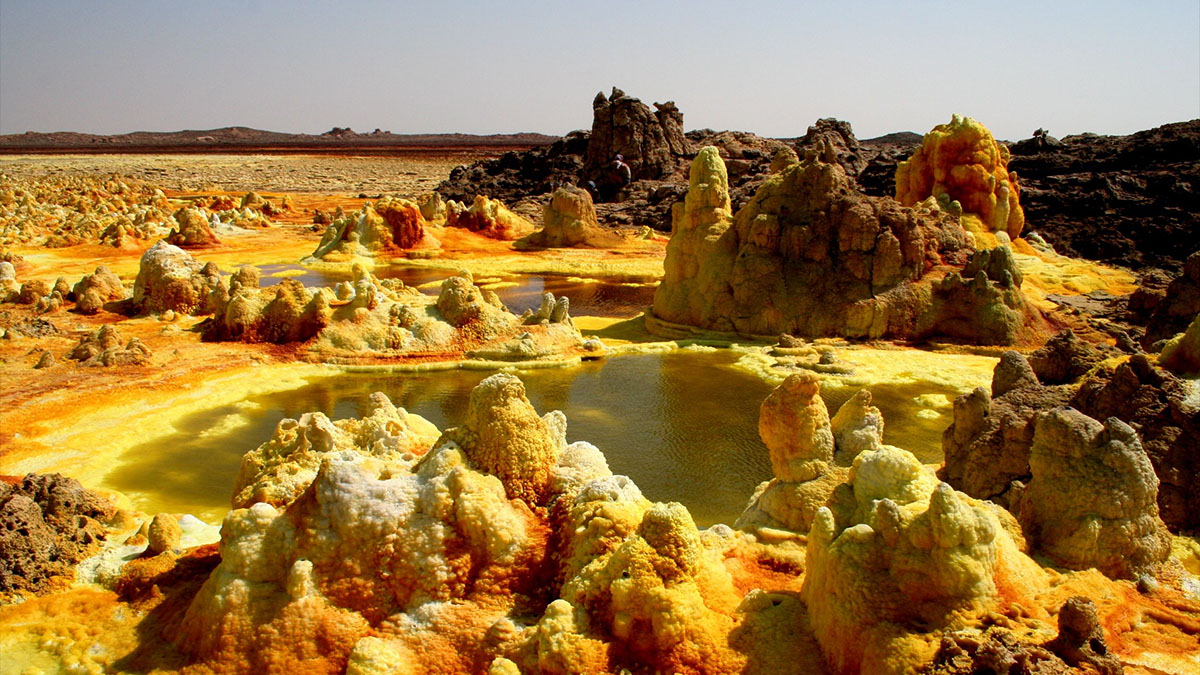scientists find a place where liquid water can’t support life

Just about everywhere you look on Earth there’s evidence of live, even if that life consists of small colonies of microbes which evolved to consume what just about any complex organism would consider toxic fumes and poisons. In fact, it seemed there was no place on the planet’s surface with even the tiniest bit of water without something living there. But now, scientists think they finally found a terrestrial environment where life as we know it can’t thrive, and that includes even the hardiest extremophiles. Where is it? In Ethiopia’s colorful Dallol hydrothermal ponds, nestled in the Danakil Depression, a place where tectonic forces are quite literally trying to rip the African continent apart.
While some early studies of these pools indicate there’s evidence of archaea, simple bacteria with a lineage going back to the dawn of life as we know it and frequent extremophiles, living in the extremely salty and acidic water, a new survey says that only traces of life are those shed by human and animal visitors and those microorganisms are ultimately doomed. Dallol’s water is simply too hostile for any carbon-based living things, inhibiting the chemical reactions needed for them to function and breaking down their structures. Brines full of magnesium effectively dissolve the fatty acids necessary to maintain cell walls while the salts in the water soak up any trace of usable liquids inside any survivors.
While it’s still possible that something is eking out some semblance of a living in these surreal, hypersaline, hyperacidic pools, there’s no hard evidence of that yet, despite numerous samples throughout the area. This finding may be of particular interest to researchers looking for traces of past life on Mars, which also had hypersaline lakes and oceans, and appears to still have some sort of water cycle with brine the primary ingredient of which is a component in rocket fuel. If Martian water reservoirs have a similar environment, only extremely hearty microbes would have any hope of survival, and that survival might depend on exotic chemistry. In short, there’s still hope for life on Mars, but the findings in Dallol aren’t exactly positive in that regard.
See: Belilla, J., et. al., (2019) Hyperdiverse archaea near life limits at the polyextreme geothermal Dallol area, Nature Ecol Evol, Vol. 3, pp. 1552–1561(2019), DOI: 10.1038/s41559-019-1005-0





